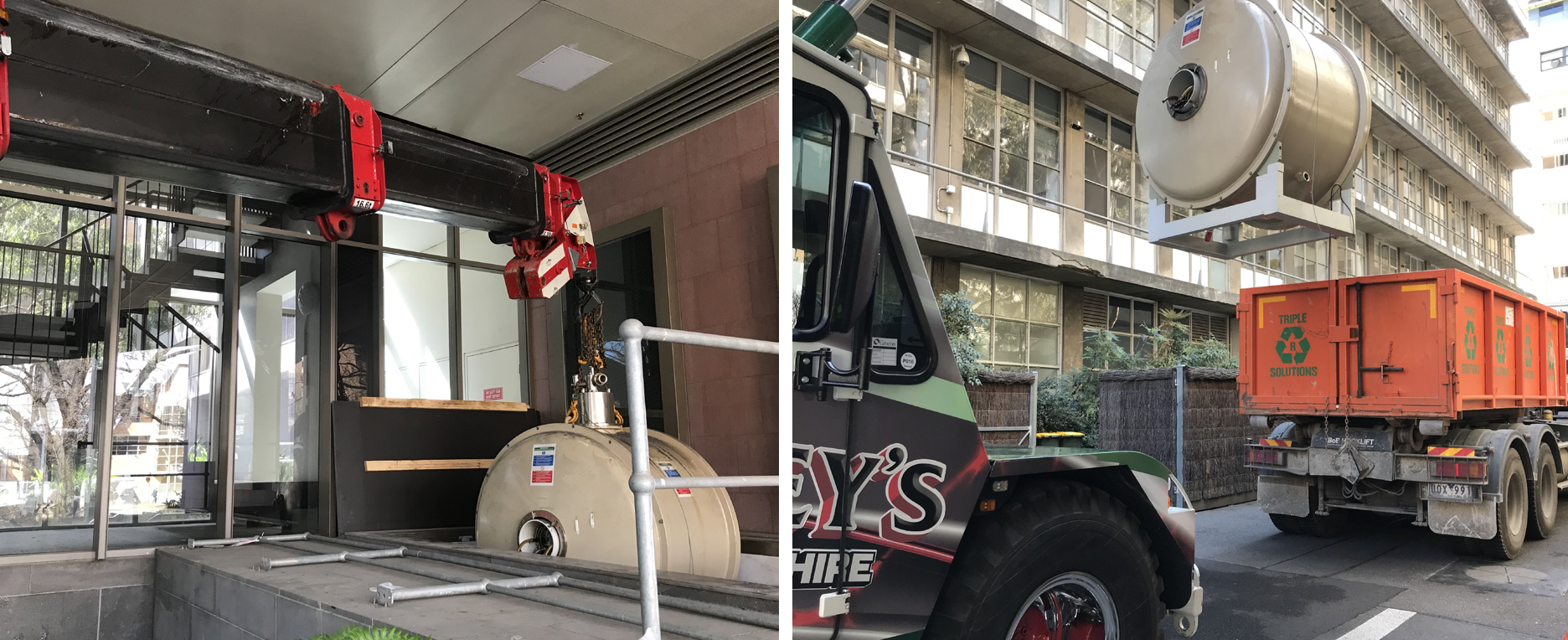The machine was retired after running thousands of scans which improved understanding of how the brain is affected by conditions including dementia, stroke, epilepsy, traumatic brain injury and multiple sclerosis, as well as contributing to studies of brain development. The decision to retire the scanner came as it was unable to compete with new higher field systems.
Associate Professor Leigh Johnston, former Head of the Animal MRI facility, said retiring the scanner came with mixed emotions.
“The 4.7T Bruker MRI scanner was a beautiful piece of technology that was integral to the careers of many neuroscientists, physicists and engineers over the years,” said Associate Professor Johnston.
“Like learning to drive a manual car, working with the 4.7T accessed the fundamentals of MRI in a way that fully automated modern systems perhaps obscure. Repetitive manual operations such as gas refills will not, however, be missed!”
Like all legends, the scanner has a colourful history. In 1999, funds for the project were raised through the Japan-Australia Gala Ball in the presence of distinguished guests including Their Imperial Highnesses Prince and Princess Tomohito of Mikasa and His Imperial Highness Prince Katsura, then Premier of Victoria The Hon. Steve Bracks, Mr Ballieu Myer and Mr Buck Myers.
In his speech launching the scanner’s operations in 2000, Mr Charles Goode AC, then President of The Florey commented that it “has already drawn together a number of world-renowned scientists undertaking neuroscience research and it will no doubt attract other scientists.” This proved to be the case with images being produced by the scanner being referenced in hundreds of scientific papers.

The Florey Facilities Manager, Benny Gregersen, said the task of decommissioning the machine required many people working together. With walls and ceilings in parts up to 70mm thick solid steel this was a complex removal that took patience and skill.
“The machine has a long history of bringing people together to work on different topics. The retirement was no different.”
“I’d like to thank David Wright from the Florey and Associate Professor Leigh Johnston from The University of Melbourne who oversaw the initial pack up and decommissioning as well as the venting of the liquid helium, Arete for their construction services, and a special mention to Christjian Wesley from Greenspace for removal and recycling of the components.”
The Florey would like to thank our philanthropic donors including the Ian Potter Foundation and Mr Charles Goode AC, community donors, and the Victorian State Government, Australian Research Council and National Health and Medical Research Council for enabling the purchase of the machine in 1999 and its ongoing maintenance. While there are no immediate plans to replace the scanner, pre-clinical imaging will continue with locally available scanners.